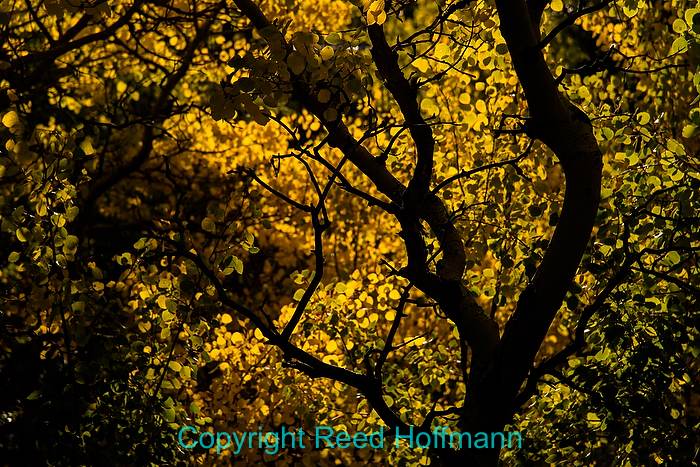I love fall, with its cooler temperatures and changing color. And as a photographer, I try to take advantage of that color, since it only happens once a year and is so brief. I got a head start this year thanks to an assignment in Colorado. Going up near 10,000-feet, I was able to photograph aspen changing color before it hits the rest of the country. Here are a few tips for when the rest of you get the opportunity:
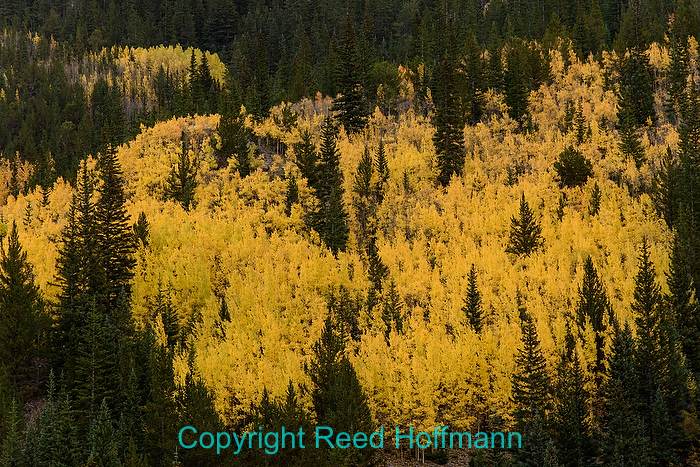
The picture has to be more than just about color. A block of color can be nice, but like sunsets, color by itself is just color. So the first thing to remember is that your photo needs a subject, or a composition that involves more than simply color. That’s the problem with photos like this – lots of color but no real subject. Nikon D750, Aperture Priority, white balance of SUNNY, ISO 200, 1/400 at f/6.3, EV -0.3, Nikkor 24-120mm f/4 lens at 110mm, Picture Control set to Standard. Photo copyright Reed Hoffmann.
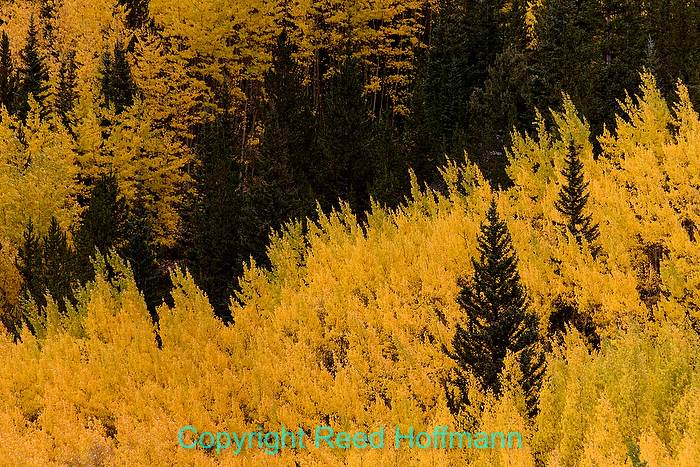
In this photo, the large pine stands out because it’s against that sea of yellow, and the diagonal slash of darkness above isolates it even more. Nikon D750, Aperture Priority, white balance of SUNNY, ISO 200, 1/500 at f/6.3, EV -0.3, Nikkor 70-300mm f/4.5-5.6 lens at 220mm, Picture Control set to Standard. Photo copyright Reed Hoffmann.
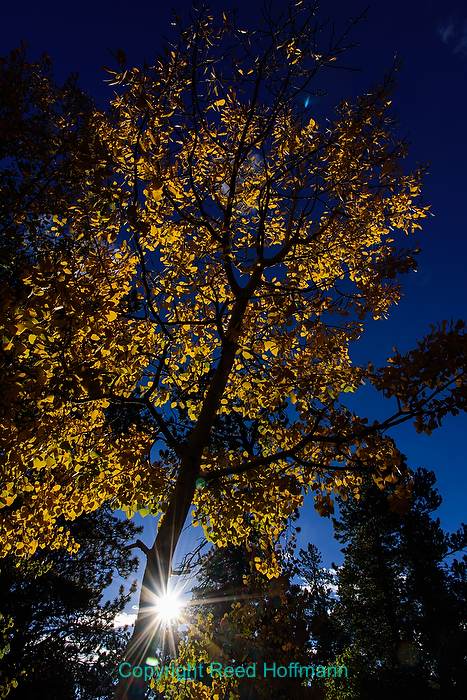
To make the most of that color, look for the sun coming at it from the side or behind. Both of those will give more “pop” than light coming from right behind you. And if you can find a spot where those leaves are against a dark background (underexposing makes the sky go even darker blue), they’ll really stand out. In this case, I also shot at a very small aperture to create the starburst with the sun. Nikon D750, Aperture Priority, white balance of SUNNY, ISO 200, 1/250 at f/16, EV -0.7, Nikkor 24-120mm f/4 lens at 24mm, Picture Control set to Standard. Photo copyright Reed Hoffmann.
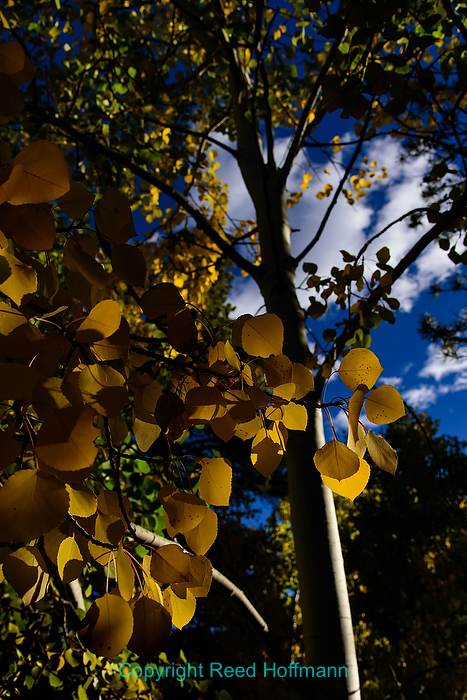
Changing your angle, and camera to subject distance, is important for variety too. To get this shot I stuck my lens right up in the branches, partly to make those small leaves appear larger to the viewer. And note how the backlight makes the leaves glow. Nikon D750, Aperture Priority, white balance of SUNNY, ISO 250, 1/400 at f/11, EV -0.7, Nikkor 24-120mm f/4 lens at 34mm, Picture Control set to Standard. Photo copyright Reed Hoffmann.
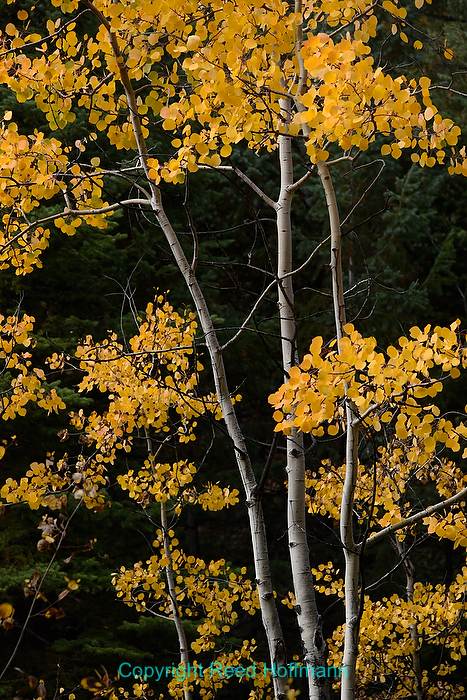
There are great lines to be found, if you look for them. See if you can’t find a spot where the trunks or limbs are either lit by sunlight or silhouetted by color or darkness behind them. Nikon D750, Aperture Priority, white balance of SUNNY, ISO 200, 1/200 at f/6.3, EV -0.3, Nikkor 24-120mm f/4 lens at 98mm, Picture Control set to Standard. Photo copyright Reed Hoffmann.
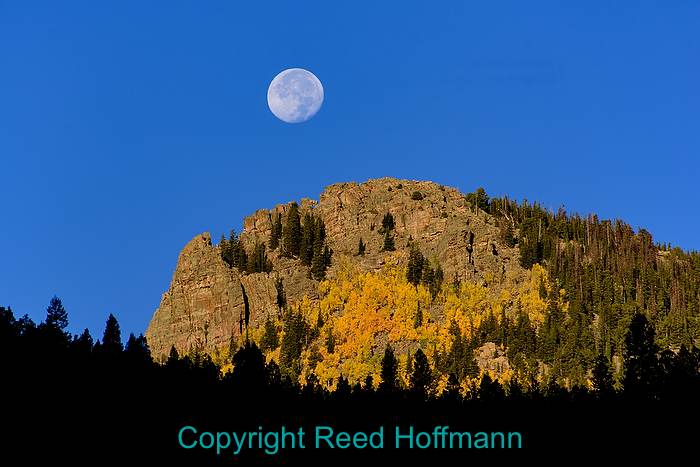
Fall color doesn’t always have to be the subject itself. It can also be a nice added touch to a photo that would be nice anyway, but the extra color makes it even better. This photo also benefits from the dark ridge at the bottom, where the sun hasn’t hit it yet. Nikon D750, Aperture Priority, white balance of SUNNY, ISO 250, 1/500 at f/7.1, EV 0.0, Nikkor 70-300mm f/4.5-5.6 lens at 300mm, Picture Control set to Standard. Photo copyright Reed Hoffmann.
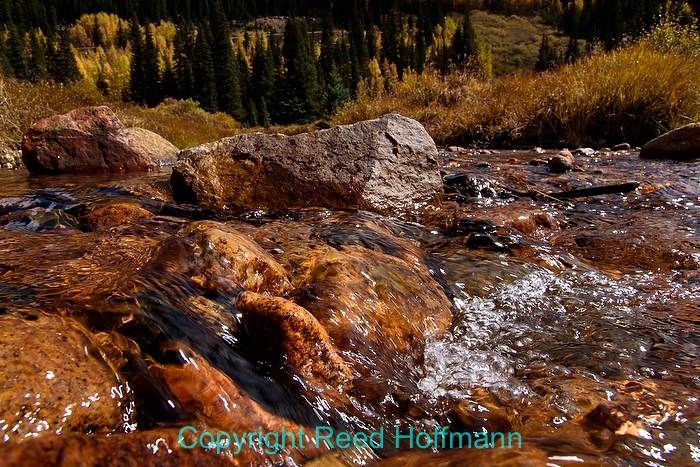
It’s easy to get tunnel vision, and only be looking at those colorful leaves. Don’t forget that there are other things around you as well, and they can make nice pictures. In this case I held my camera just above water level to make the rocks and water the dominant subjects (and had to keep wiping spray off the lens). Nikon D750, Aperture Priority, white balance of SUNNY, ISO 200, 1/160 at f/18, EV -1.0, Nikkor 24-120mm f/4 lens at 24mm, Picture Control set to Standard. Photo copyright Reed Hoffmann.
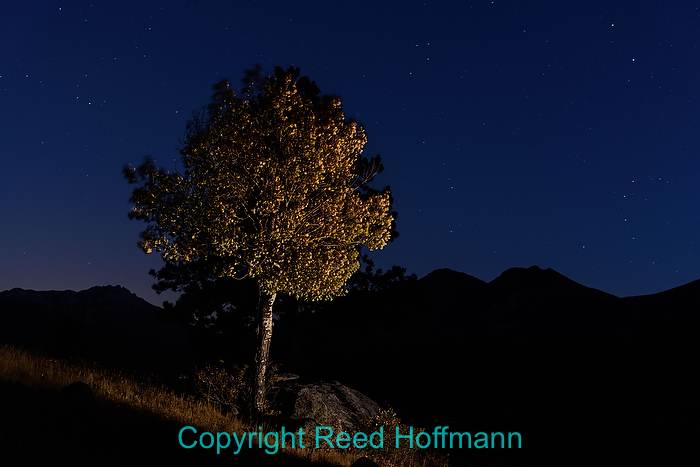
And as always, keep thinking about other ways to be creative. I found this lone aspen in the afternoon, then came back after sunset to light paint it with a flashlight. Of course, I needed to use a tripod. Biggest challenge? Not killing myself running back and forth in the dark! Nikon D750, Manual, white balance of SUNNY, ISO 400, 20-seconds at f/4.5, EV -0.7, Nikkor 24-120mm f/4 lens at 46mm, Picture Control set to Standard. Photo copyright Reed Hoffmann.
(If you like this story, please share it with your friends, and also let them know about the links about photography I post on my business Facebook page)

